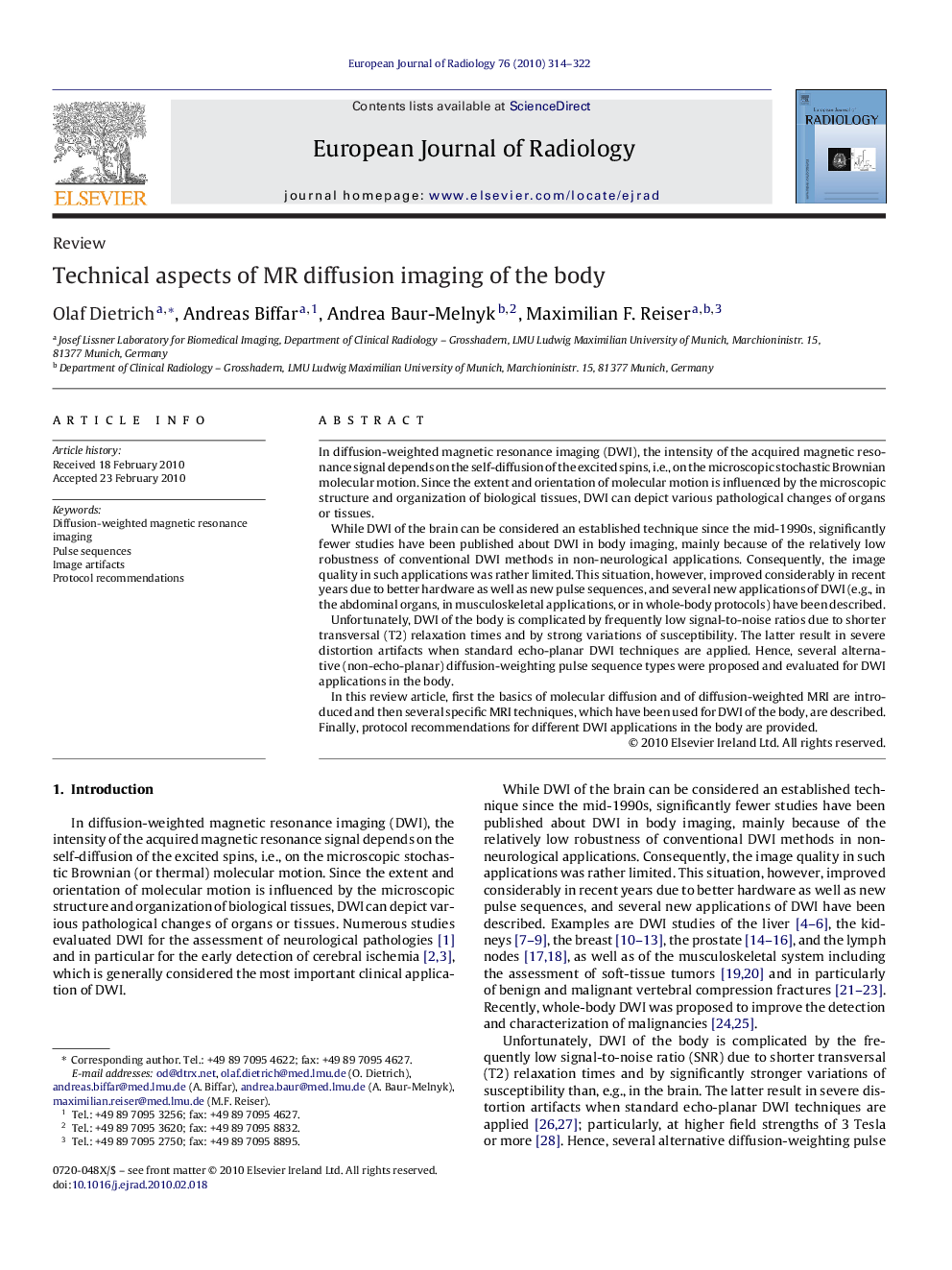| Article ID | Journal | Published Year | Pages | File Type |
|---|---|---|---|---|
| 4227012 | European Journal of Radiology | 2010 | 9 Pages |
In diffusion-weighted magnetic resonance imaging (DWI), the intensity of the acquired magnetic resonance signal depends on the self-diffusion of the excited spins, i.e., on the microscopic stochastic Brownian molecular motion. Since the extent and orientation of molecular motion is influenced by the microscopic structure and organization of biological tissues, DWI can depict various pathological changes of organs or tissues.While DWI of the brain can be considered an established technique since the mid-1990s, significantly fewer studies have been published about DWI in body imaging, mainly because of the relatively low robustness of conventional DWI methods in non-neurological applications. Consequently, the image quality in such applications was rather limited. This situation, however, improved considerably in recent years due to better hardware as well as new pulse sequences, and several new applications of DWI (e.g., in the abdominal organs, in musculoskeletal applications, or in whole-body protocols) have been described.Unfortunately, DWI of the body is complicated by frequently low signal-to-noise ratios due to shorter transversal (T2) relaxation times and by strong variations of susceptibility. The latter result in severe distortion artifacts when standard echo-planar DWI techniques are applied. Hence, several alternative (non-echo-planar) diffusion-weighting pulse sequence types were proposed and evaluated for DWI applications in the body.In this review article, first the basics of molecular diffusion and of diffusion-weighted MRI are introduced and then several specific MRI techniques, which have been used for DWI of the body, are described. Finally, protocol recommendations for different DWI applications in the body are provided.
